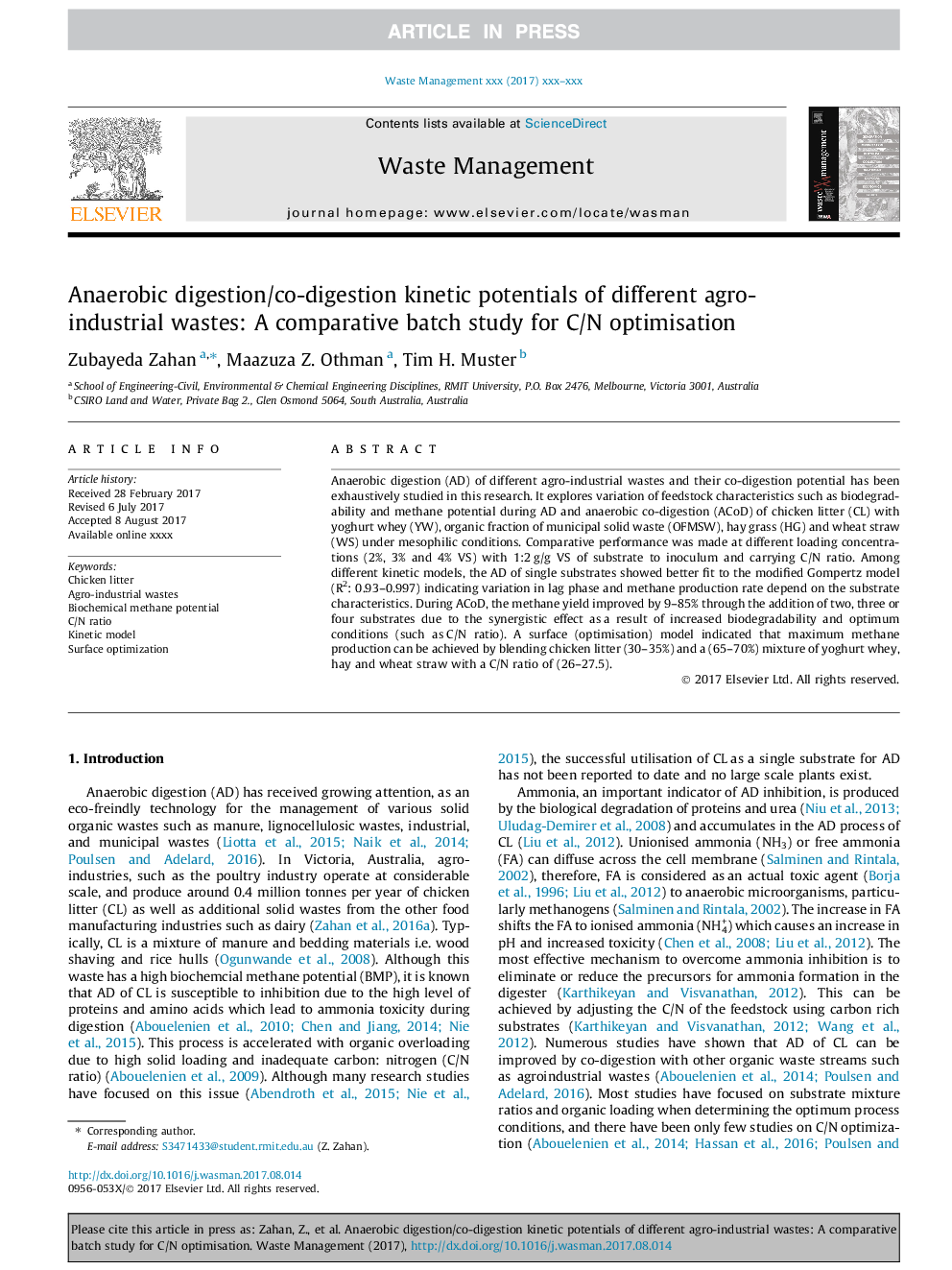| Article ID | Journal | Published Year | Pages | File Type |
|---|---|---|---|---|
| 8870360 | Waste Management | 2018 | 12 Pages |
Abstract
Anaerobic digestion (AD) of different agro-industrial wastes and their co-digestion potential has been exhaustively studied in this research. It explores variation of feedstock characteristics such as biodegradability and methane potential during AD and anaerobic co-digestion (ACoD) of chicken litter (CL) with yoghurt whey (YW), organic fraction of municipal solid waste (OFMSW), hay grass (HG) and wheat straw (WS) under mesophilic conditions. Comparative performance was made at different loading concentrations (2%, 3% and 4% VS) with 1:2 g/g VS of substrate to inoculum and carrying C/N ratio. Among different kinetic models, the AD of single substrates showed better fit to the modified Gompertz model (R2: 0.93-0.997) indicating variation in lag phase and methane production rate depend on the substrate characteristics. During ACoD, the methane yield improved by 9-85% through the addition of two, three or four substrates due to the synergistic effect as a result of increased biodegradability and optimum conditions (such as C/N ratio). A surface (optimisation) model indicated that maximum methane production can be achieved by blending chicken litter (30-35%) and a (65-70%) mixture of yoghurt whey, hay and wheat straw with a C/N ratio of (26-27.5).
Related Topics
Physical Sciences and Engineering
Earth and Planetary Sciences
Geotechnical Engineering and Engineering Geology
Authors
Zubayeda Zahan, Maazuza Z. Othman, Tim H. Muster,
